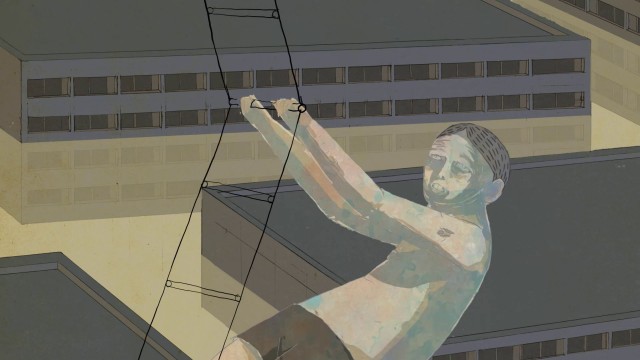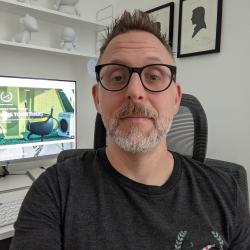Carrying on the rich cinematic tradition of portraying dysfunctional parent/child relationships on-screen, Malte Stein’s unsettling animated short Flut (Flood) is a tale of broken relationships and emotional pressure. Set on an estate slowly being consumed by the titular flood, Stein’s nightmarish world evokes intense feelings of claustrophobia and distress as we follow the film’s protagonist as he battles to escapes his suffocating circumstances.
“I do the films that I wish to see, but I can´t find anywhere”
Human failure, a subject that’s of major interest to the filmmaker, was a big influence on Flut’s narrative, with Stein stating that it “concerns us all and it causes drama”, before elaborating that “I think, that our subconscious, our fears and prejudice are always very present. They appear in our nightmares, but also in our behavior and in the way how we treat each other.”
Creating his storyline during a bout of creative writing, the director admits to falling in love with his characters so much that it “became an irresistible wish to finally see them acting in this terrifying animated theater piece”. With his narrative in place, Stein had to turn to the production to bring his beloved characters, and their world, to the screen and he did so with remarkable detail. Despite the surreal, nightmarish quality to the film, there’s a tangible quality to the design that makes it seem uncomfortably believable. From the mother’s cleavage to the exaggerated grins, these are details that will stick with you long after watching and haunt your thoughts for days afterwards.

“I do the films that I wish to see, but I can´t find anywhere” – Stein on his motivation for creating Flut
Despite describing his approach as “classic hand-drawn animation”, Stein also explains that he used a “quite complex compositing method to achieve this color style and the organic feel of the characters and backgrounds”. The narrative may feel erratic and unexpected, but his methods are quite the opposite, rational and organised. “I create logical hierarchies and everything has to be kept in order”, he says, before labelling it “a bit like mathematics”. Like most films where tone feels as important as storyline, the music and sound design (created by Stein and Mauro Marzo) are vital in helping maintain tension and atmosphere and the ominous drone underscoring most of the short is certainly effective at keeping viewers on edge. If that was one the director’s aim, he certainly succeeded.
With an impressive festival run, which saw the film screen at Annecy, Glas, Ottawa and many more, Flut announced Stein as an exciting new voice on the independent animation scene. The production of his short may have been what he calls an “existential disaster” – it was created with no budget, as Stein worked several side jobs and lived pretty much on coffee and spaghetti – but we’re glad he stuck with it as it turned out to be a haunting and memorable piece. Having also seen the director’s latest short Ding, as part of Fantoche 2021, I can confirm Flut was no fluke and predict we’ll be seeing more of Steine’s striking style in the near future.

 Rob Munday
Rob Munday